On the Effect of Pre-training for Transformer in Different Modality on Offline Reinforcement Learning
This repository contains the code for "On the Effect of Pre-training for Transformer in Different Modality on Offline Reinforcement Learning". The LaTeX source for our paper is availabe at https://github.com/t46/paper-pre-training-different-modality-offline-rl.
Most of our code is based on the following repositories:
- https://github.com/machelreid/can-wikipedia-help-offline-rl
- https://github.com/gtegner/mine-pytorch
- https://github.com/google-research/google-research/tree/master/representation_similarity
We sincerely thank the contributors for making the code available to us. Our research would not have been possible without these codes.
The primary files and directories used to generate the results of the paper are the following:
.
|-- can-wikipedia-help-offline-rl
| |-- experiment.py
| |-- analysis
|-- mine-pytorch
| |-- run_mi_exp.py
The directory can-wikipedia-help-offline-rl contains the code for most of our experiments (Sections 5.1 - 5.6). The directory mine-pytorch contains only some of the code for mutual information estimation (Section 5.2). Unless otherwise noted, the following description assumes that you are in pre-training-different-modality-offline-rl directory.
We provide conda environments mine for mutual information calculation by MINE in mine-pytorch and wikirl-gym for the others in can-wikipedia-help-offline-rl. Therefore, unless otherwise noted, assume that you are activating the respective conda environment when you are in the respective directories.
Our experiments use the mujoco task in D4RL, a benchmark task for offline reinforcement learning. Therefore, first install the mujoco.
D4RL depends on mujoco-py (2.1.2.14) which requires mujoco210. Thus, install mujoco210 following the instruction of the repository of mujoco-py. We excerpted the instruction from the repository below:
Download the MuJoCo version 2.1 binaries for Linux or OSX.
Extract the downloaded
mujoco210directory into~/.mujoco/mujoco210.If you want to specify a nonstandard location for the package, use the env variable
MUJOCO_PY_MUJOCO_PATH.
cd can-wikipedia-help-offline-rl
conda env create -f conda_env.yml
conda activate wikirl-gym
cd data
git clone https://github.com/rail-berkeley/d4rl.git
cd d4rl
D4RL depends on dm-control and mujoco-py. While the latest version of dm-control (1.0.7) requires mujoco-2.1.1, that of mujoco-py (2.1.2.14) requires mujoco210. Therefore, you should downgrade dm-control so that you use D4RL with mujoco210 (See the reference).
To that end, edit setupy.py in the cloned D4RL repository. Specifically, change 'dm_control>=1.0.3' in setupy.py to 'dm_control @ git+https://github.com/deepmind/dm_control@644d9e0047f68b35a6f8b79e5e8493e2910563af'.
After that, run the following:
pip install -e .
python download_d4rl_datasets.py
This command downloads data as {env-name}-{data-type}-v2.pkl in can-wikipedia-help-offline-rl/data directory. You use this directory as the path to load the dataset for experiments and analysis (e.g. data_path in experiment.py).
cd ..
conda deactivate wikirl-gym
cd mine-pytorch
conda env create -f conda_env.yml
cd ..
To replicate the analysis done in the paper, train/fine-tune the model first with the mujoco data. Before that, activate wandb. This will allow you to save the results of the experiment to wandb.
wandb login
cd can-wikipedia-help-offline-rl
The script to run the fine-tuning experiment.py is just under can-wikipedia-help-offline-rl. Run the following command to train the randomly initialized model used in Section 5.1 - 5.4 (context K=20).
python experiment.py \
--env hopper \
--dataset medium \
--model_type dt \
--seed 666 \
--outdir checkpoints \
--dropout 0.2 \
--share_input_output_proj \
--warmup_steps 5000 \
--embed_dim 768 \
--n_layer 12 \
-w
For pre-trained models, add --pretrained_lm gpt2 for language-pre-trained model (GPT2) and --pretrained_lm openai/imagegpt-small for image-pre-trained model (iGPT). Running command above outputs per epoch i) fine-tuned models under ./checkpoints directory, i.e. checkpoints/dt_medium_hopper_666/model_40.pt and ii) results such as mean return and action error to wandb. For sanity check in Section 4, run analysis/section-4-sanity-check/sanity_check_preformance.ipynb (sanity_check_preformance.py) after running the above command (Table 1). Run the command for all environments (--env: hopper, halfcheetah, and walker2d) and all types of models (--pretrained_lm: "not added", gpt2, and openai/imagegpt-small ), respectively.
For the results of Section 5.5 and 5.6.2 (context K=1), just add --K 1 option. For block replacement experiment (Section 5.6.1), In addition to --K 1, add --pretrained_block {replaced_block_id} and --max_iters 10. You run the command for all environments (--env: hopper, halfcheetah, and walker2d), two types of pre-trained models (--pretrained_lm: "not added" and gpt2), and all block ids (--pretrained_block: 0, ..., 11) respectively.
The codes for all analyses, except for the mutual information estimation, are under can-wikipedia-help-offline-rl/analysis. We provide both python scripts and jupyter notebooks. Both scripts and notebooks perform the same analysis.
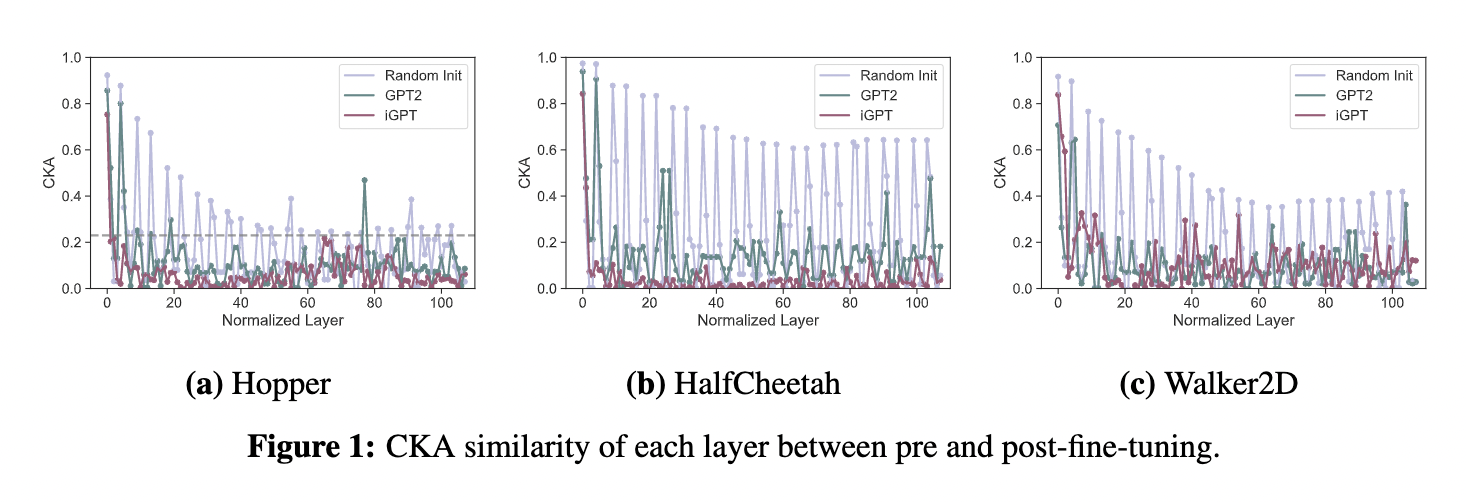 The script and notebooks for activation similarity analisis are in
The script and notebooks for activation similarity analisis are in analysis/section-51-activation-similarity.
compute_cka.ipynb(compute_cka.py)- Compute CKA between activations of two models, which output the CKA values used to plot Figure.1.
plot_cka.ipynb(plot_cka.py)- Plot Figure.1 from the CKA values save in
compute_cka.ipynb.
- Plot Figure.1 from the CKA values save in
5.2 Mutual Information Between Hidden Representation and Data
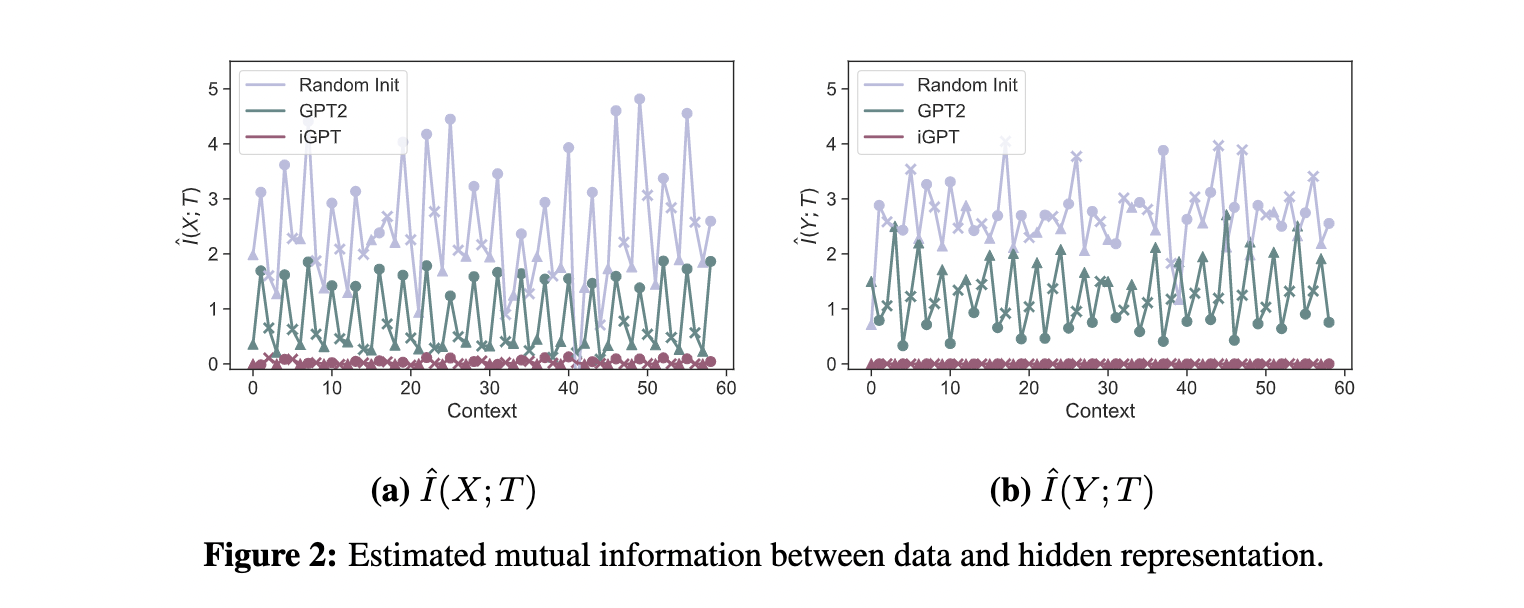 The code to run mutual information estimateion by MINE is in
The code to run mutual information estimateion by MINE is in mine-pytorch and the notebook and script for activation similarity analisis are in analysis/section-52-mutual-information
mutual_information.ipynb(plot_mutual_information.py)- Plot Figure 2 and 16 from estimated mutual information by
mine-pytorch/run_mi_exp.py.
- Plot Figure 2 and 16 from estimated mutual information by
save_activation.py- Save hidden representation used to estimate mutual information in
mine-pytorch/run_mi_exp.py.
- Save hidden representation used to estimate mutual information in
The steps for mutual information estimation are following:
-
Run
save_activation.pyand save activation into a directory. The directory where the activation is stored is referenced when runningmine-pytorch/run_mi_exp.py. -
Run the code below for mutual information estimation:
cd mine-pytorch conda activate mine python run_mi_exp.py \ --path_to_save_mi YOUR_SAVE_PATH \ --path_to_data YOUR_DATA_PATH \ --path_to_activation YOUR_ACTIVATION_PATH conda deactivate mine cd ../can-wikipedia-help-offline-rl/analysis/section-52-mutual-informationFor the result of Appendix E.3, add
--exp_type no_contextoption. -
Run
mutual_information.ipynbto plot the figure.
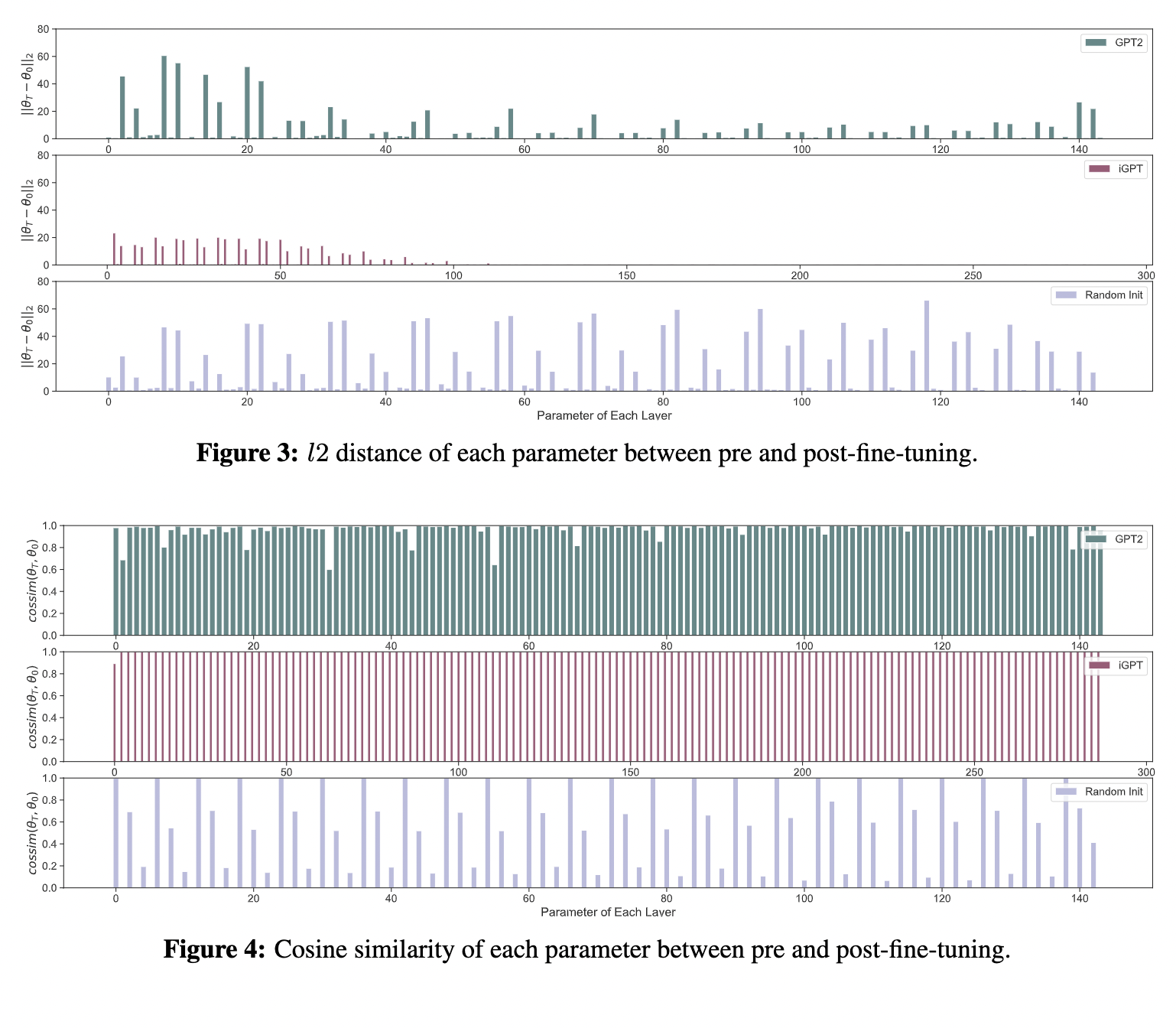 The notebook for activation similarity analisis is in
The notebook for activation similarity analisis is in analysis/section-53-parameter-similarity.
parameter_similarity_analysis.ipynb(parameter_similarity_analysis.py)- Compute parameter similarity and plot Figures 3 and 4.
 The notebooks and scripts for gradient analisis are in
The notebooks and scripts for gradient analisis are in analysis/section-54-gradient-analysis.
grad_confusion.ipynb(compute_grad_confusion.py)- Plot Figure 5.
grad_norm.ipynb(compute_grad_norm.py)- Plot Figures 6 and 7.
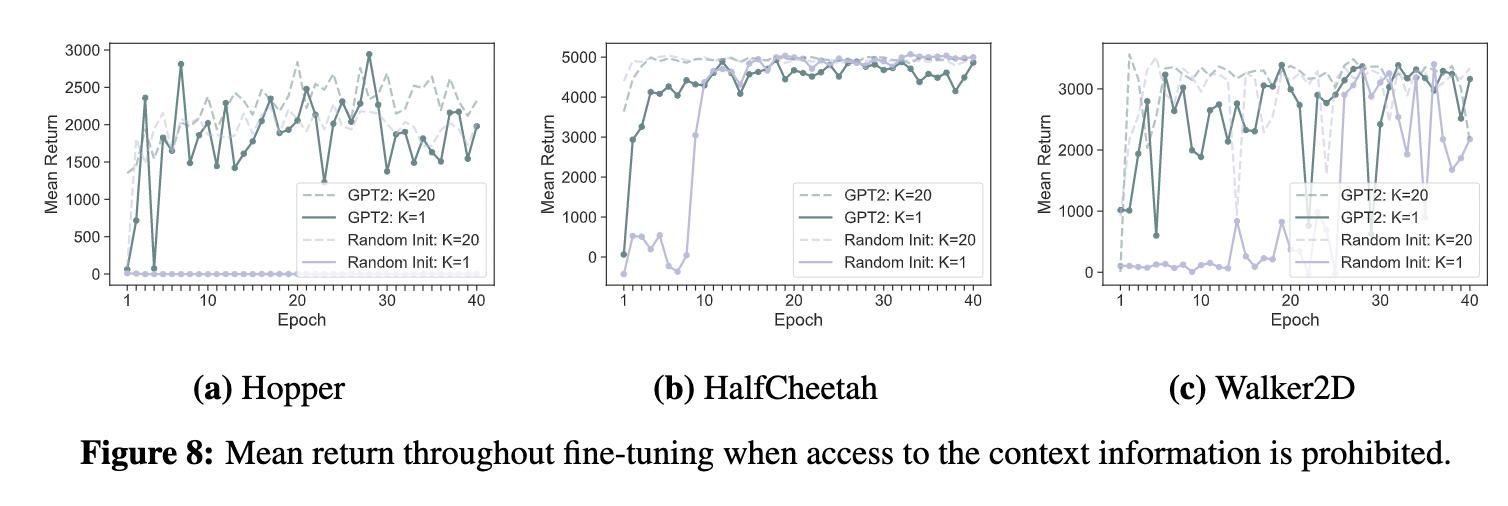
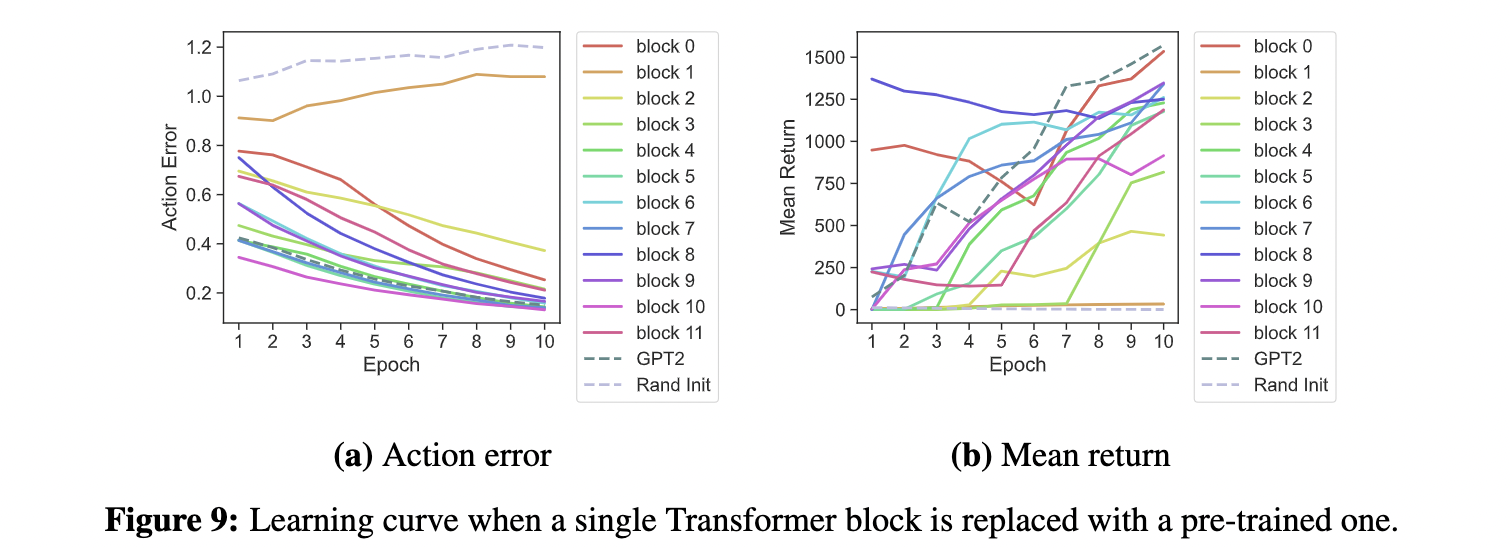 tebook to plot the results of fine-tuning with no context is in
tebook to plot the results of fine-tuning with no context is in analysis/section-55-fine-tuning-no-context.
plot_learning_curve_no_context.ipynb(plot_learning_curve_no_context.py)- Plot Figures 8 and 9
- Note that Figure 9 is created by this notebook, though Figure 9 is in Section 5.6.
- Obtain the result to create Table 2.
- Plot Figures 8 and 9
 The notebook and script for attention distance analisis are in
The notebook and script for attention distance analisis are in analysis/section-56-dependence-on-context.
attention_distance.ipynb(compute_attention_distance.py)- Plot Figure 10.
The following two analyses are done during rebuttal period, the result of which are in Appendix.
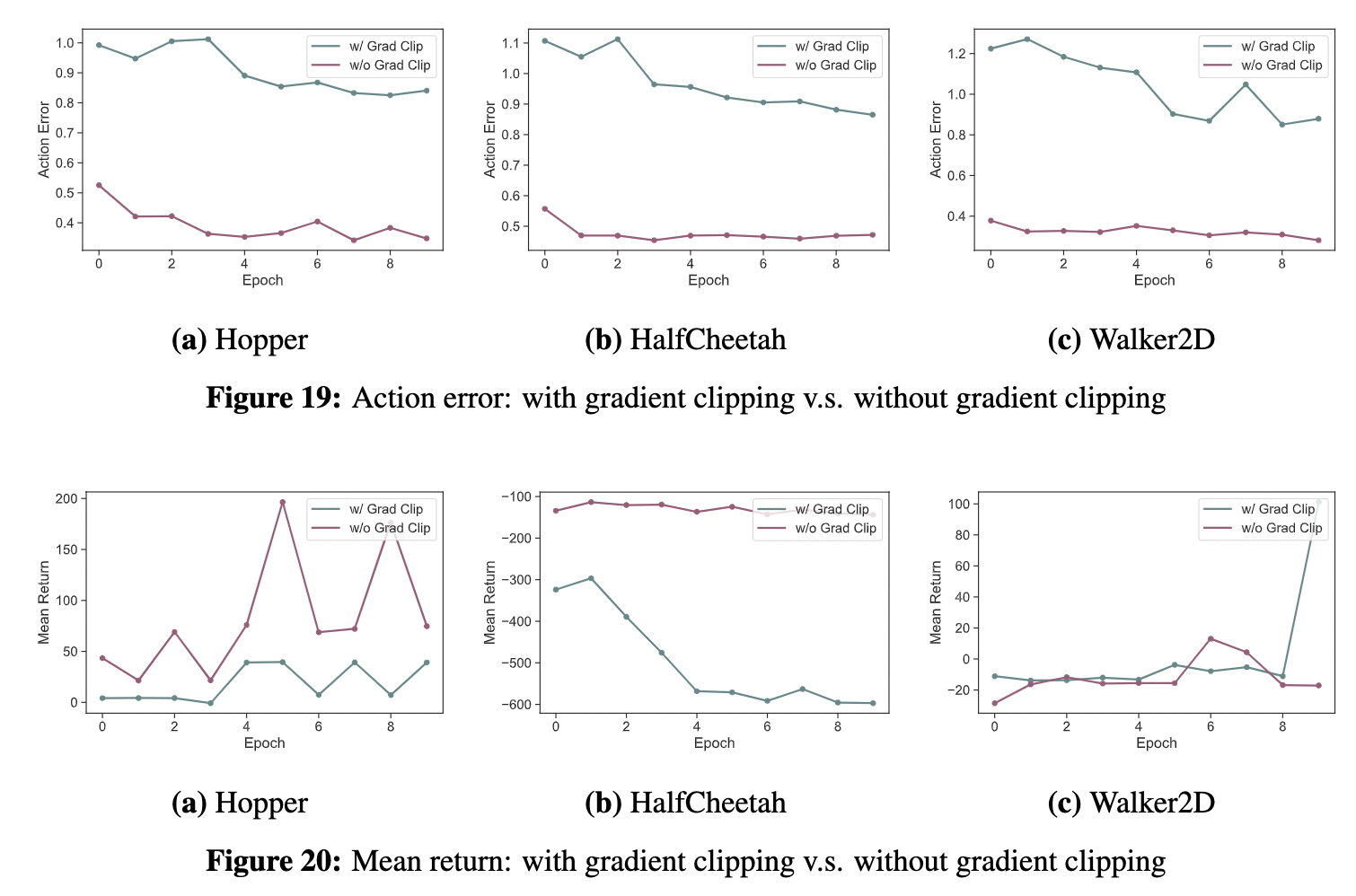 Run
Run experiment.py with --remove_grad_clip option.
python experiment.py \
--env hopper \
--dataset medium \
--model_type dt \
--pretrained_lm openai/imagegpt-small \
--seed 666 \
--outdir checkpoints \
--dropout 0.2 \
--share_input_output_proj \
--warmup_steps 5000 \
-w \
--max_iters 10 \
--remove_grad_clip
Then, plot the figures in the jupyter notebook. The notebook for this analysis is in analysis/section-54-gradient-analysis.
plot_learning_curve_grad_clip.ipynb(plot_learning_curve_grad_clip.py)- Plot Figures 19 and 20.
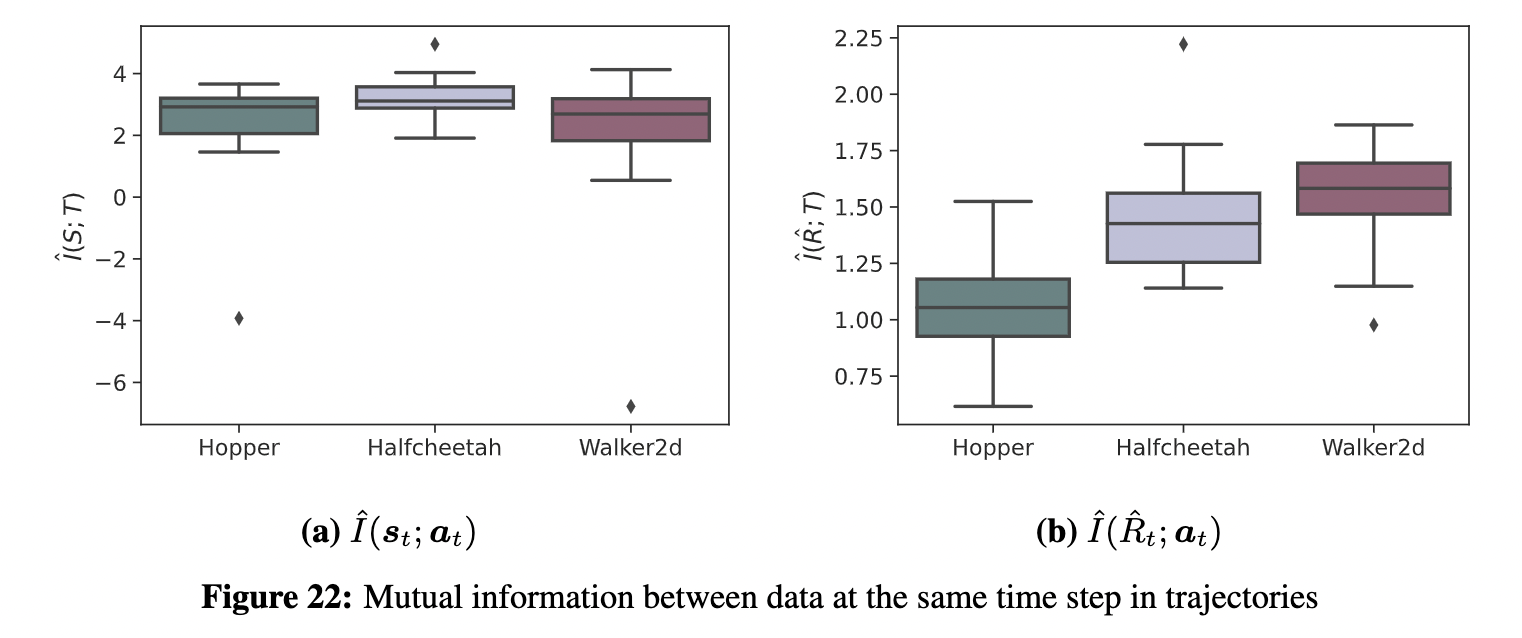 The notebook for comparing mutual information of different data type is in
The notebook for comparing mutual information of different data type is in analysis/section-52-mutual-information.
mutual_information_data.ipynb(mutual_information_data.py)- Plot Figure 22.
- Run
run_mi_exp.pywith--exp_type dataoption.cd mine-pytorch conda activate mine python run_mi_exp.py --exp_type data conda deactivate mine cd ../can-wikipedia-help-offline-rl/analysis/section-52-mutual-information - Run
mutual_information_data.ipynbto plot figures.
MIT